Nestled in pine groves 45 miles east of central Madrid, the nine-mile-long San Juan reservoir is the only lake in the region where swimming and water sports are permitted. As a result, a bucolic 1960s subdivision on the shores of its eastern extremity has become a sought-after location for upmarket weekend houses. In 2017, after acquiring one of the few remaining virgin plots, a Madrid-based client, who is a keen jet skier, commissioned four local architecture firms to draft plans for a family vacation home. “They were all very different,” he says of this mini-competition, “and my wife and I liked more than one. But after 10 minutes’ discussion, I knew we’d work with estudio_entresitio—they were so open, attentive, and patient.” The feeling, it turned out, was mutual. “This kind of architecture is impossible with someone who doesn’t care,” says María Hurtado de Mendoza Wahrolén, cofounder alongside César Jiménez de Tejada Benavides of the 2007 Design Vanguard firm. “But our client is even more intense than we are!”
Though ideally located on the waterfront, the site was challenging: rocky, steep (a 45-degree incline), and bound by restrictive regulations that were subject to unpredictable interpretation by the mayor. Moreover, neighboring houses often flooded when the rare rains came. “To avoid administrative headaches,” the client explains, “we made several decisions: minimal leveling; no concrete, except where unavoidable; just one story, to be sure we complied with the prohibition on rising more than 23 feet above grade; and timber construction, to minimize building time and water consumption.” In addition, he specified accommodation comprising four bedrooms (primary, guest, two for children), a generous living/dining/kitchen area, parking (prohibited on the street), staff quarters, and, of course, ample outdoor space.
Given the program’s size (3,700 square feet), a single-level home would have been impossible within the constraints of the site. Instead, the house espouses the topography, cascading down the slope in a series of cross-laminated-timber (CLT) boxes linked by stairs. So steep is the terrain, the garden is purely ornamental, usable outdoor space being provided by spacious decks on the roof of each box. Steel micropiles driven into the bedrock avoid the need for leveling and, above grade, become slender pilotis that lift the CLT boxes into the air, allowing rainwater to flow beneath. Protected from the elements thanks to a sandwich of insulation, waterproofing, and chevron-mounted pine-plank cladding, the house is painted in Falu red, a souvenir of Hurtado de Mendoza’s childhood trips to her mother’s native Sweden (where this copper-mining byproduct is traditionally used on timber facades).
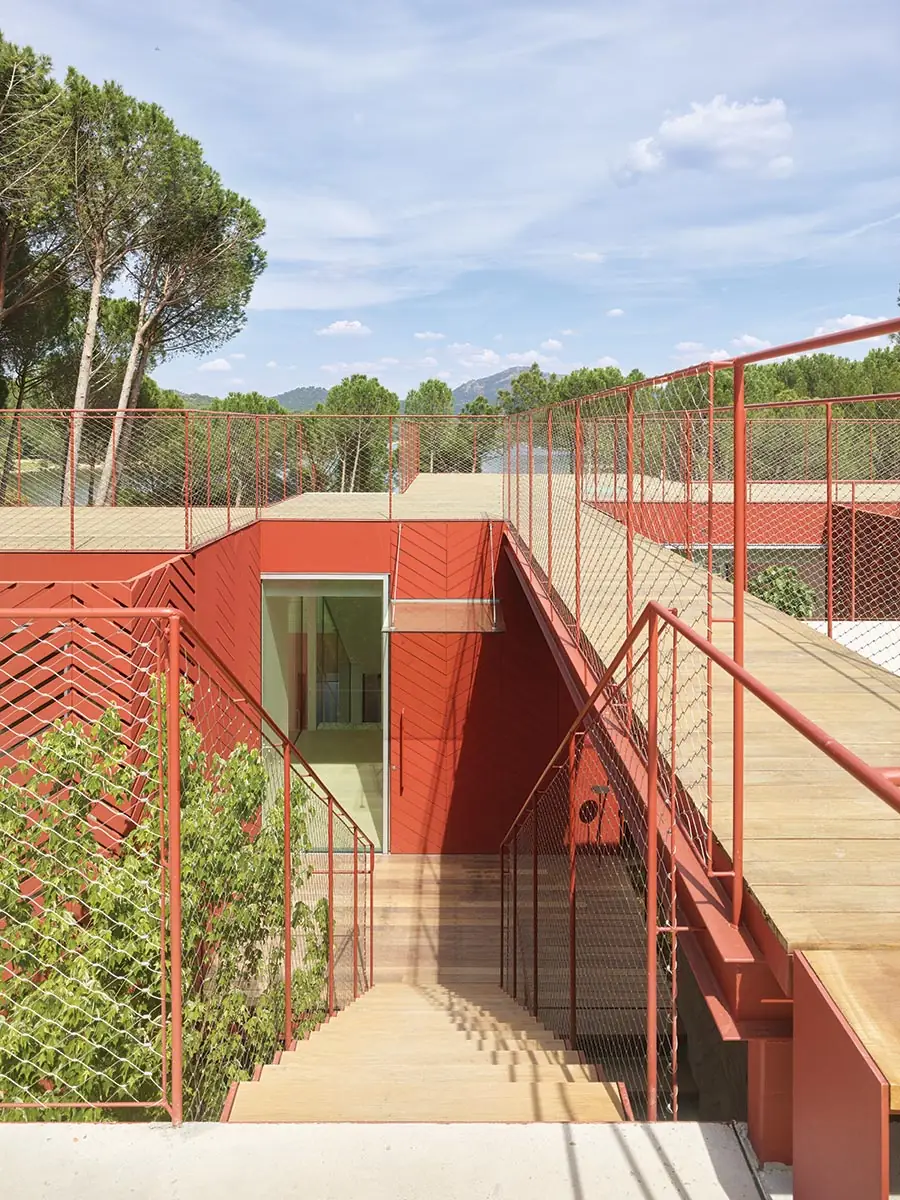
1
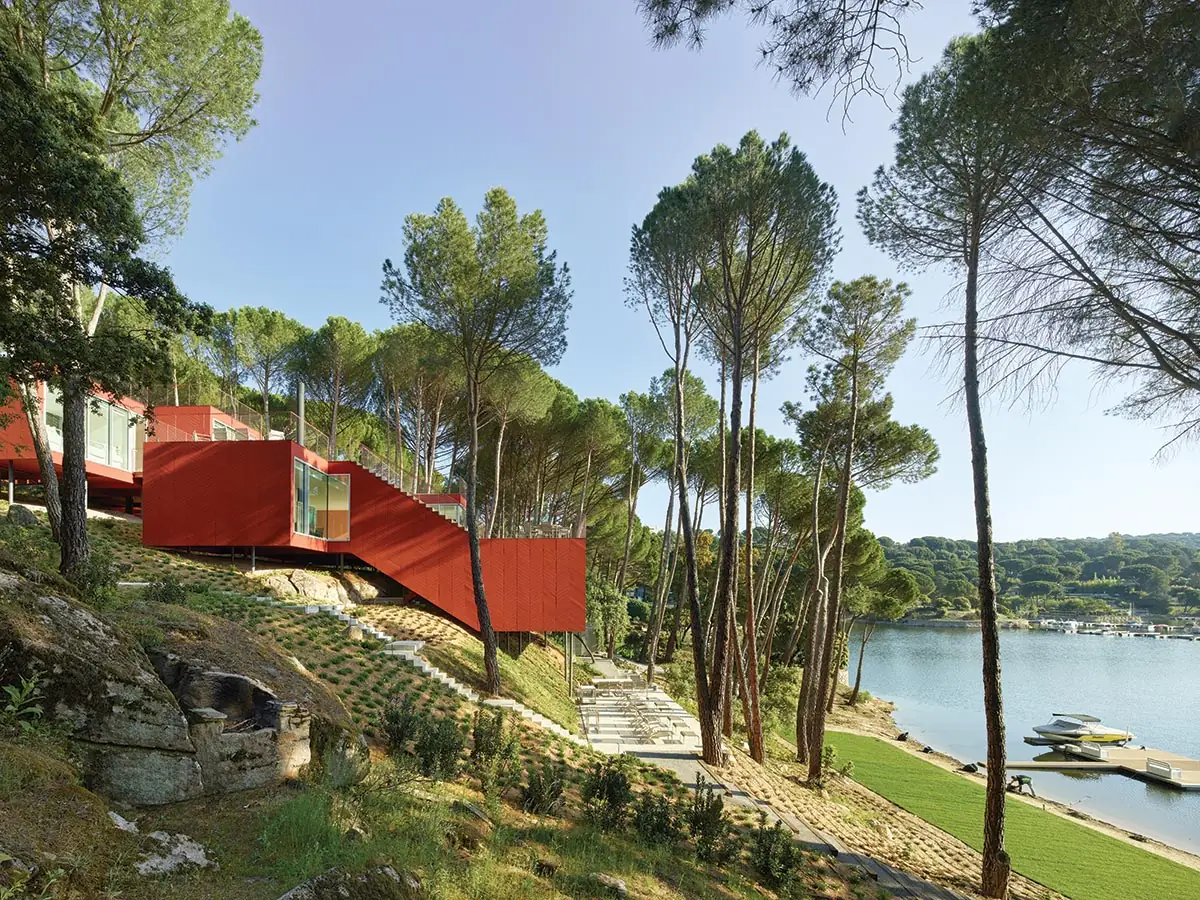
2
Entered from the top (1), the house steps down the hill (2 & top of page), with the primary suite above a terrace at the lowest level. Photos © Roland Halbe, click to enlarge.
The one exception to the light touch on the terrain is the service-quarters/HVAC-machinery block, realized in solid raw concrete (board-marked in chevrons) so that its roof, which communicates directly with the street, is strong enough for parking. As a result, the house appears extremely discreet when first encountered, slowly revealing itself in time and space. An outdoor stair leads from the concrete platform to the first level of accommodation, containing the guest and children’s bedrooms. From the entrance, a glazed internal stair descends to the L-shaped living area, while a similar stair accesses the lowest level, where the primary suite is isolated from the rest of the house. All the main spaces command splendid views, the primary bedroom enjoying a particularly immersive connection with the landscape. Mirroring the internal layout, the generous roof terraces are linked by external stairs that offer an alternative route around the residence.
At once simple and complex, the house appears beguilingly Escheresque when viewed from the upper decks. Inside, however, the spatial sequence is all fluidity and logic. “We worked very hard to decompose the space from within, so you no longer read the boxes,” says Hurtado de Mendoza. The changes in level and the generous glazing afford multiple diagonal views that make the house appear far larger than it really is, while enormous sliding glass doors dissolve the living room into the deck above the main bedroom. Copious underfloor heating and cooling, and ceiling-mounted ventilation and heat-recovery systems are entirely dissimulated in a total-design interior where every square inch has been custom made and detailed, from doors, railings, and lighting to the vast quantity of invisible closets. “This is the kind of project that allows us to do a lot of research and try things out,” says Hurtado de Mendoza. “We designed or sourced everything except movable furniture. We wish we could have chosen that too!”
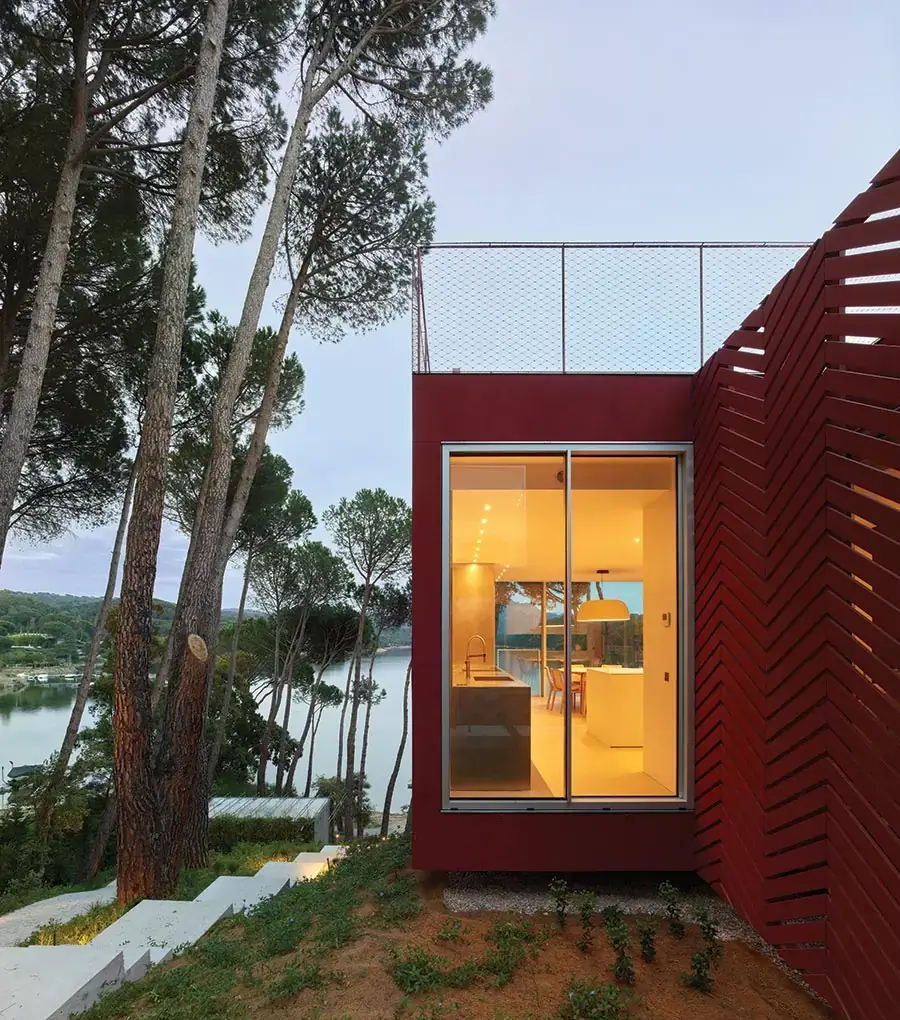
3
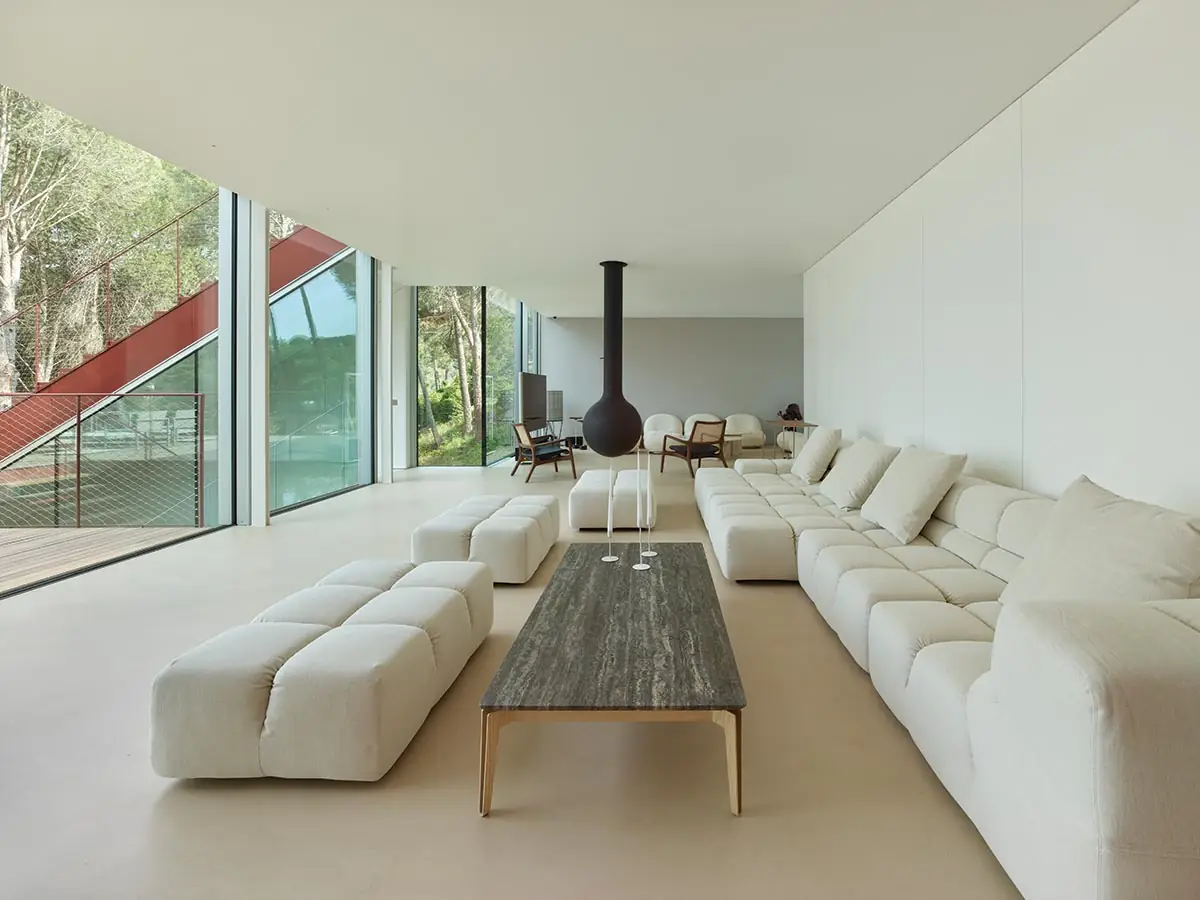
4
Sliding glass doors in the kitchen and living room (3 & 4) open to the deck above the primary suite (5). Photos © Roland Halbe
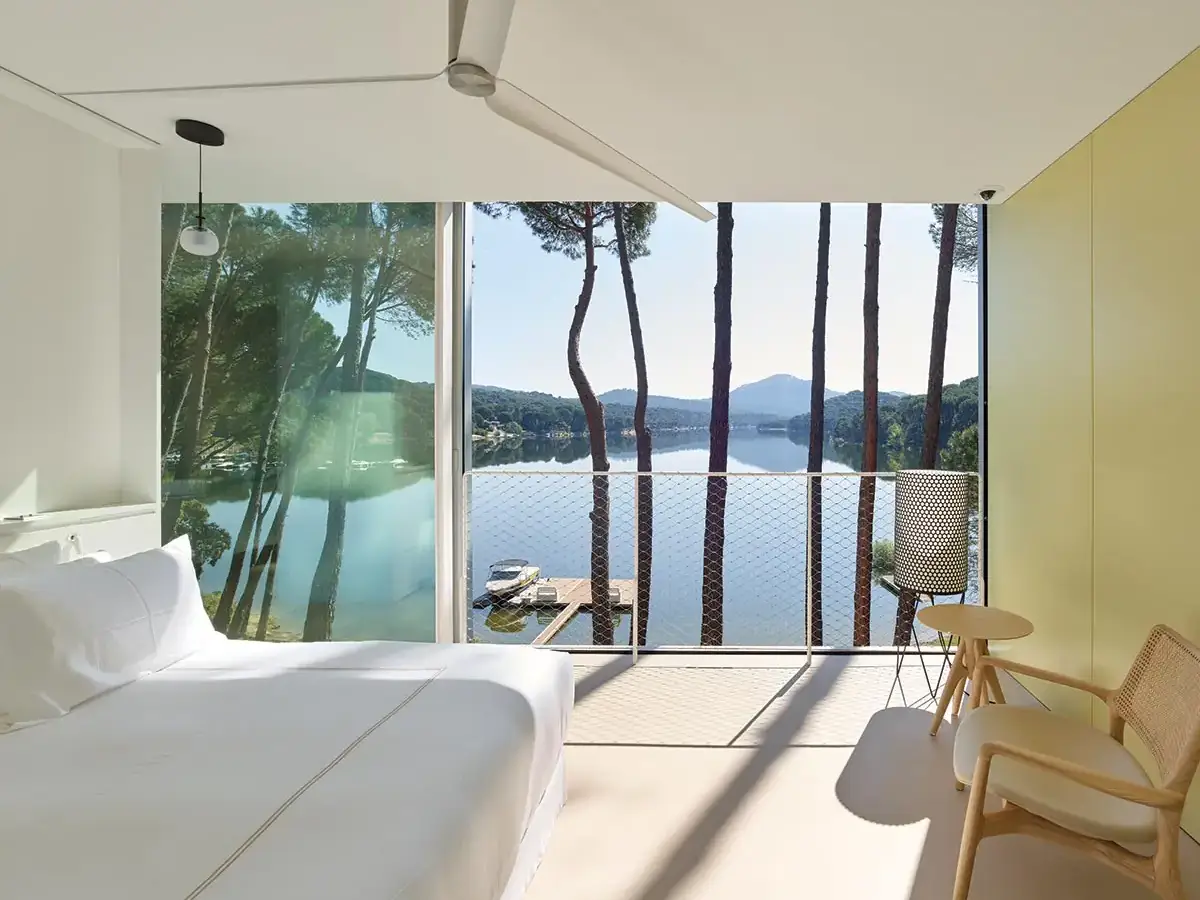
5
In this home, control is both an architect/client obsession and an abstract divinity. “The house is designed on a grid that you never see, but which everything relates to in one way or another,” explains Hurtado de Mendoza. “We never know beforehand how a project will turn out, because we play by the rules of the grid, of geometry, and every result is a good one.” Among the architects’ favorite books, she laughingly admits, is Óscar Tusquets Blanca’s God Will See It.
Click plan to enlarge
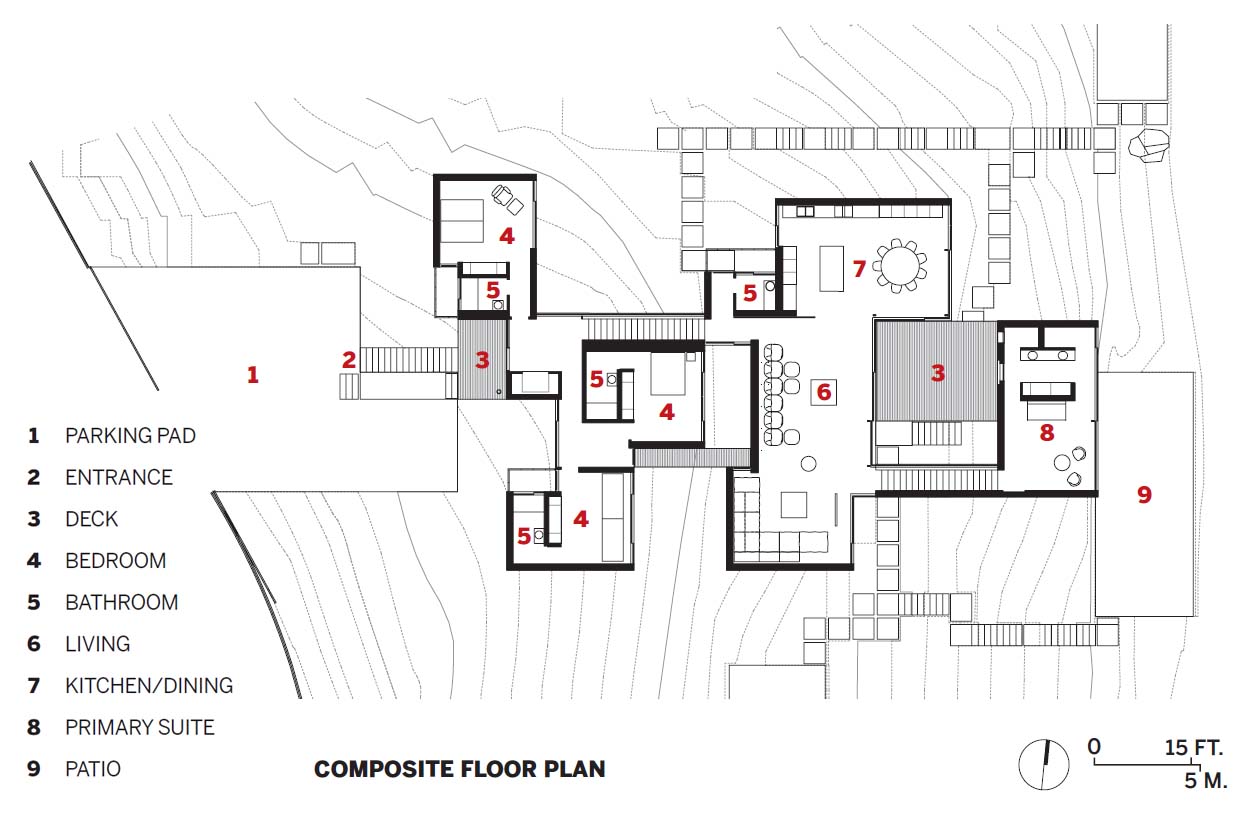
Click graphic to enlarge
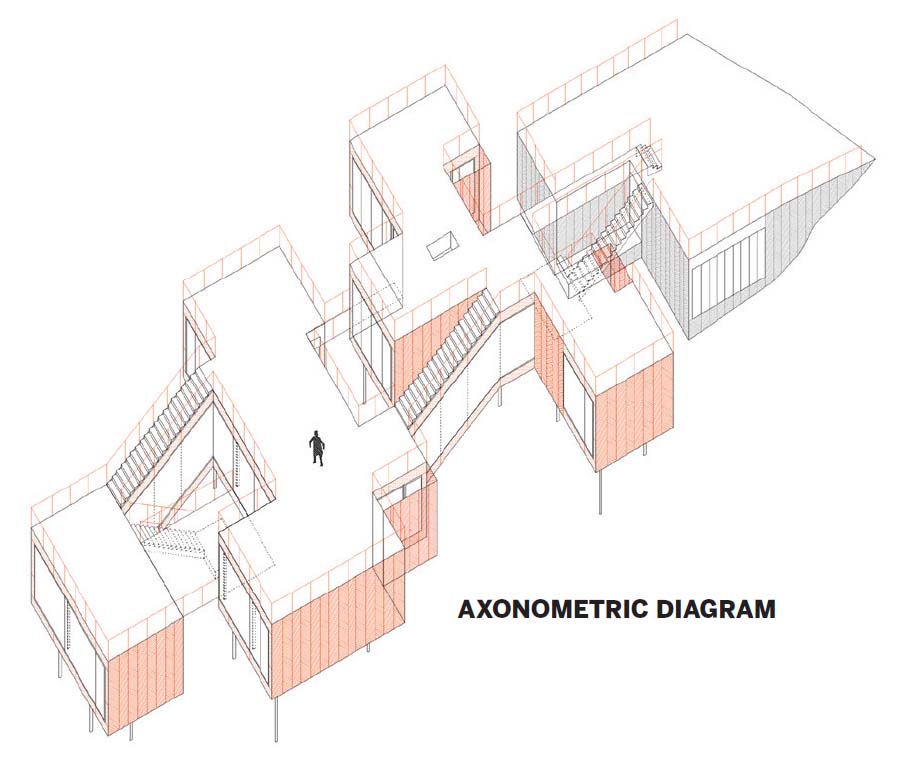
Credits
Architect:
estudio_entresitio — Maria Hurtado de Mendoza, Cesar Jimenez de Tejada, Alvar Ruiz, principals
Consultants:
Ignacio Aspe (structure); AlterMATERIA (CLT); Manuel Rodriguez (energy efficiency); Arkilum (lighting design); Planta Paisajistas (landscape)
Size:
3,700 square feet
Cost:
$1.5 million
Completion Date:
March 2022
Sources
Structure:
Piveteau Bois (CLT)
Cladding:
Lunawood; Rockwool; HECO-Schrauben Iberica
Paint:
Falu Rödfärg
Handrails:
Arc316 Mesh and Cables
Interiors:
Knauf (ceilings and partitions); DuPont (Corian); Leicht (cabinets); Pavi-Navas (terrazzo)
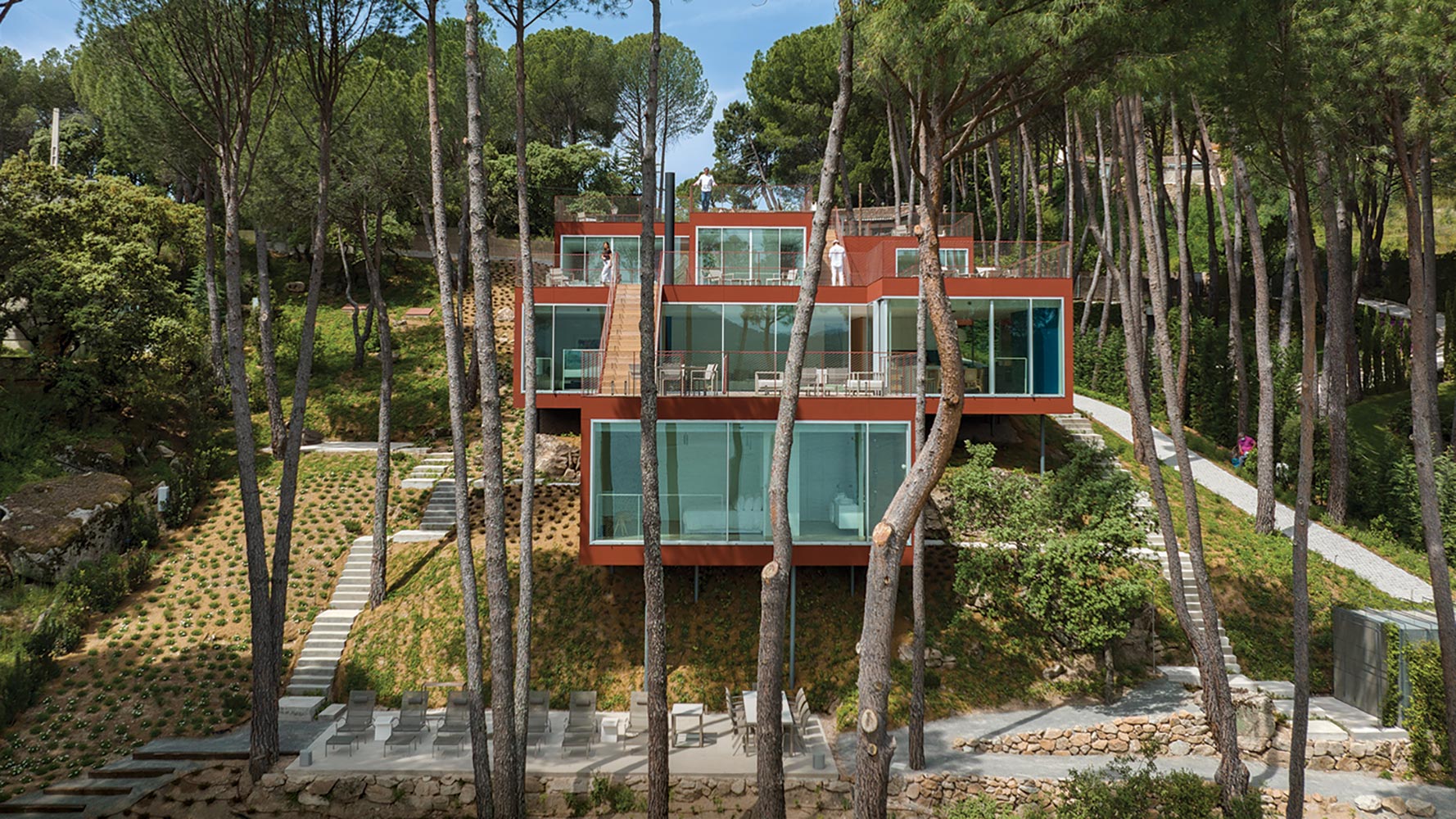


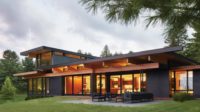
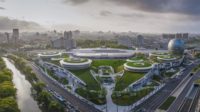

Post a comment to this article
Report Abusive Comment